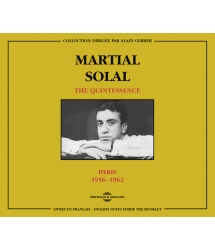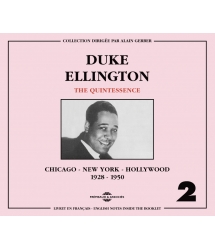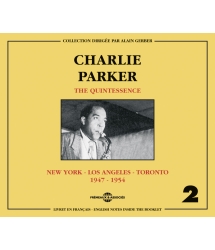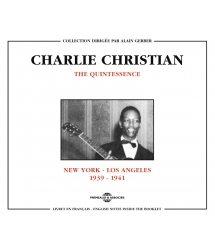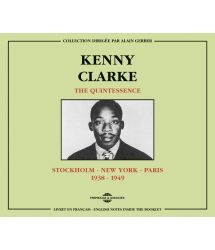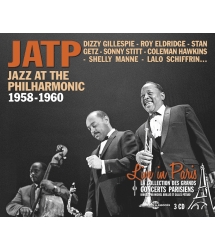- Notre Catalogue
- Philosophie
- Philosophes du XXème siècle et d'aujourd'hui
- Histoire de la philosophie (PUF)
- Contre-Histoire et Brève encyclopédie par Michel Onfray
- L'œuvre philosophique expliquée par Luc Ferry
- La pensée antique
- Les penseurs d'hier vus par les philosophes d'aujourd'hui
- Textes philosophiques historiques interprétés par de grands comédiens
- Histoire
- Livres
- Sciences Humaines
- Paroles historiques
- Livres audio & Littérature
- Notre Catalogue
- Jazz
- Blues - R'n'B - Soul - Gospel
- Rock - Country - Cajun
- Chanson française
- Musiques du monde
- Afrique
- France
- Québec / Canada
- Hawaï
- Antilles
- Caraïbes
- Cuba & Afro-cubain
- Mexique
- Amérique du Sud
- Tango
- Brésil
- Tzigane / Gypsy
- Fado / Portugal
- Flamenco / Espagne
- Yiddish / Israël
- Chine
- Tibet / Népal
- Asie
- Océan indien / Madagascar
- Japon
- Indonésie
- Océanie
- Inde
- Bangladesh
- URSS / Chants communistes
- Musiques du monde / Divers
- Musique classique
- Compositeurs - Musiques de film - B.O.
- Sons de la nature
- Notre Catalogue
- Jeunesse
- Philosophie
- Nouveautés
- Comment commander ?
- Recevoir le catalogue
- Manifeste
- Dictionnaire











- Notre Catalogue
- Philosophie
- Philosophes du XXème siècle et d'aujourd'hui
- Histoire de la philosophie (PUF)
- Contre-Histoire et Brève encyclopédie par Michel Onfray
- L'œuvre philosophique expliquée par Luc Ferry
- La pensée antique
- Les penseurs d'hier vus par les philosophes d'aujourd'hui
- Textes philosophiques historiques interprétés par de grands comédiens
- Histoire
- Livres
- Sciences Humaines
- Paroles historiques
- Livres audio & Littérature
- Notre Catalogue
- Jazz
- Blues - R'n'B - Soul - Gospel
- Rock - Country - Cajun
- Chanson française
- Musiques du monde
- Afrique
- France
- Québec / Canada
- Hawaï
- Antilles
- Caraïbes
- Cuba & Afro-cubain
- Mexique
- Amérique du Sud
- Tango
- Brésil
- Tzigane / Gypsy
- Fado / Portugal
- Flamenco / Espagne
- Yiddish / Israël
- Chine
- Tibet / Népal
- Asie
- Océan indien / Madagascar
- Japon
- Indonésie
- Océanie
- Inde
- Bangladesh
- URSS / Chants communistes
- Musiques du monde / Divers
- Musique classique
- Compositeurs - Musiques de film - B.O.
- Sons de la nature
- Notre Catalogue
- Jeunesse
- Philosophie
- Nouveautés
- Comment commander ?
- Recevoir le catalogue
- Manifeste
- Dictionnaire
KENNY CLARKE, RED GARLAND, KAI WINDING, OSCAR PETTIFORD, LEE KONITZ, PHINEAS NEWBORN, J.J. JOHNSON
Ref.: FA5721
Label : Frémeaux & Associés
Durée totale de l'œuvre : 1 heures 9 minutes
Nbre. CD : 1
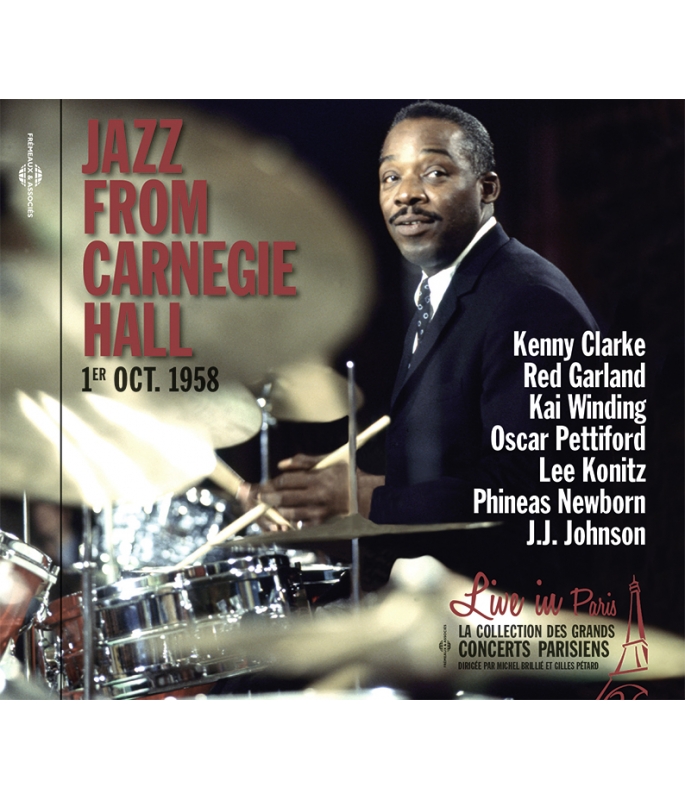
KENNY CLARKE, RED GARLAND, KAI WINDING, OSCAR PETTIFORD, LEE KONITZ, PHINEAS NEWBORN, J.J. JOHNSON
Initiée par le producteur britannique Harold Davison, qui voulait concurrencer les célèbres « JATP – Carnegie Hall » de l’immense impresario Norman Granz, « Jazz from Carnegie Hall » est une formule, qui bien qu’éphémère, n’a pourtant rien à envier à son modèle, tant les musiciens qui la composent sont talentueux. Le concert enregistré le 1er octobre 1958, dont il ne reste que les sessions présentées sur ce CD (qui sont totalement inédites), permet d’entendre la fine fleur du jazz de la fin des années 1950. L’âge d’or des concerts de jazz à Paris.
Patrick FRÉMEAUX
La collection Live in Paris, dirigée par Michel Brillié, permet de retrouver des enregistrements inédits (concerts, sessions privées ou radiophoniques), des grandes vedettes du jazz, du rock & roll et de la chanson du XXe siècle. Ces prises de son live, et la relation avec le public, apportent un supplément d’âme et une sensibilité en contrepoint de la rigueur appliquée lors des enregistrements studios. Une importance singulière a été apportée à la restauration sonore des bandes, pour convenir aux standards CD tout en conservant la couleur d’époque.
Patrick FRÉMEAUX & Gilles PÉTARD
DIRECTION ARTISTIQUE : GILLES PÉTARD ET MICHEL BRILLIÉ
DROITS : FREMEAUX & ASSOCIES EN ACCORD AVEC BODY AND SOUL
DISTRIBUTION : GROUPE FREMEAUX COLOMBINI
When British producer Harold Davison thought of rivalling the American “Jazz At The Philharmonic” (JATP) formula of the great jazz impresario Norman Granz, he invented “Jazz from Carnegie Hall”. It was short-lived, but given the talent of the musicians onstage it had no cause to be jealous. This concert was recorded on October 1, 1958, and the tracks here are the only ones to survive from that session. This is their first-ever release, and they feature the cream of the crop in the late Fifties: the Golden Age of jazz in Paris. Patrick FRÉMEAUX
The Live in Paris collection by Michel Brillié allows listeners to hear previously-unreleased recordings (made at concerts and private- or radio-sessions) by the great 20th stars in jazz, rock & roll and song. These “live” takes, and the artists’ rapport with their audiences, gives these performances an additional soul and sensibility in counterpoint to the rigorous demands of studio recordings. Particular care was taken when restoring the sound of these tapes in order to meet CD standards while preserving the original colours of the period. Patrick FRÉMEAUX & Gilles PÉTARD
CONCERT INTRODUCTION BY DANIEL FILIPACCHI • DAHOUD • AFTERNOON IN PARIS • BLUE LOU 5. STAR EYES • LAVERNE WALK • STARDUST • THIS CAN’T BE LOVE • BAG’S GROOVE • IT’S ALRIGHT WITH ME • MAD ABOUT THE BOY • BERNIE’S TUNE.
-
PisteTitreArtiste principalAuteurDuréeEnregistré en
-
1Concert Introduction By Daniel FilipacchiKenny Clarke, Oscar Petitford, Lee Konitz, Red Garland, J.J. Johnson, Phineas Newborn, Kai WindingDaniel Filipacchi00:01:181958
-
2DahoudKenny Clarke, Oscar Petitford, Lee Konitz, Red Garland, J.J. Johnson, Phineas Newborn, Kai WindingClifford Brown00:04:291958
-
3Afternoon In ParisKenny Clarke, Oscar Petitford, Lee Konitz, Red Garland, J.J. Johnson, Phineas Newborn, Kai WindingJohn Lewis00:08:571958
-
4Blue LouKenny Clarke, Oscar Petitford, Lee Konitz, Red Garland, J.J. Johnson, Phineas Newborn, Kai WindingIrving Mills00:03:121958
-
5Star EyesKenny Clarke, Oscar Petitford, Lee Konitz, Red Garland, J.J. Johnson, Phineas Newborn, Kai WindingGene De Paul00:04:061958
-
6Laverne WalkKenny Clarke, Oscar Petitford, Lee Konitz, Red Garland, J.J. Johnson, Phineas Newborn, Kai WindingOscar Petitford00:06:421958
-
7StardustKenny Clarke, Oscar Petitford, Lee Konitz, Red Garland, J.J. Johnson, Phineas Newborn, Kai WindingParish Mitchell00:06:001958
-
8This Can't Be LoveKenny Clarke, Oscar Petitford, Lee Konitz, Red Garland, J.J. Johnson, Phineas Newborn, Kai WindingHart Lorenz00:06:531958
-
9Bag's GrooveKenny Clarke, Oscar Petitford, Lee Konitz, Red Garland, J.J. Johnson, Phineas Newborn, Kai WindingMilt Jackson00:09:161958
-
10It's Alright With MeKenny Clarke, Oscar Petitford, Lee Konitz, Red Garland, J.J. Johnson, Phineas Newborn, Kai WindingCole Porter00:06:331958
-
11Mad About The BoyKenny Clarke, Oscar Petitford, Lee Konitz, Red Garland, J.J. Johnson, Phineas Newborn, Kai WindingN. Coward00:04:121958
-
12Bernie's TuneKenny Clarke, Oscar Petitford, Lee Konitz, Red Garland, J.J. Johnson, Phineas Newborn, Kai WindingB. Miller00:08:031958
FA5721 JFCH
JAZZ
FROM CARNEGIE HALL
1ER OCT. 1958
Live in Paris
Kenny Clarke
Red Garland
Kai Winding
Oscar Pettiford
Lee Konitz
Phineas Newborn
J.J. Johnson
La collection des grands concerts parisiens
Dirigée par Michel Brillié et Gilles Pétard
Jazz from Carnegie Hall – Live in Paris 1er octobre 1958
Par Michel Brillié
Un lieu mythique, c’est plus chic.
Gustav Mahler, Leopold Stokowski, Vladimir Horowitz, Maria Callas, Liza Minnelli, Bob Dylan, les Stones— ils ont tous laissé leur marque à ce vénérable bâtiment. Oscar Peterson y a débuté sa carrière avec une apparition « surprise » en 1949 – une idée de son nouveau mentor Norman Granz.
Au Carnegie Hall de New-York, Kenny « Klook » Clarke avait déjà promené ses brushes.. Deux fois en 1954, et une fois en 1955. Le 3 avril pour être précis, c’était pour un grand hommage à la mémoire d’un génial musicien. Ce jour-là, le Charlie Parker Memorial Concert avait réuni les plus grands noms du jazz.
Oscar Pettiford, lui, était presque un habitué : en 1947, il avait participé à deux JATP at Carnegie Hall. Quelques années plus tard, le 15 octobre 1955, il était l’un des musiciens invités au grand concert de soutien « Jazz For Israel », avec une flopée d’autres jazzmen, Art Blakey, Miles Davis, le MJQ…
Pour finir, Kai Winding y avait soufflé dans son trombone dès 1947 & J.J. Johnson l’avait précédé en 46… Beaucoup de ces musiciens avaient découvert l’architecture fin de siècle du building en briques. C’est que Norman Granz y avait installé le point de départ Côte Est de ses tournées du Jazz at the Phiharmonic – version « At Carnegie Hall ». La dernière mouture de 58 était du 12 septembre.
Curieusement, quatre jours plus tard, une tournée jusque là inédite en Europe, Jazz from Carnegie Hall, démarre en Angleterre. Le 16 Septembre 1958, une bande de jazzmen déjà réputés débarquent à Manchester pour le kick off de la tournée européenne.
Pourquoi deux évènements siglés Carnegie Hall, tous deux sur le modèle jazz jam-session ? Il semble que l’idée du JFCH ait germé dans le cerveau d’un concert promoter britannique, Harold Davison. L’homme a déjà organisé des tournées dans le Royaume Uni. C’est grâce à son action sur le syndicat des musiciens anglais, qui bloquaient toute venue d’artiste américain au Royaume Uni, que ce gentleman chauve à la pipe avait, dans les années 50, réussi à faire venir à Londres Sarah Vaughan, Dave Brubeck et nombre de bluesmen. Conscient du succès du JATP, le concept d’une marque concurrente de tournées jazz lui semblait attractif. Alors, Jazz from Carnegie Hall…Pourquoi pas ?
Une bande d’anciens et de futurs expat’s
La troupe que Davison assemble pour la première (et la dernière) mouture du JFCH est assez hétéroclite.
D’abord, des nouvelles têtes pour la première fois en Europe : Oscar Pettiford, Phineas Newborn, Red Garland., J.J. Johnson. Le bassiste était déjà allé au début des années 50 au Japon et en Corée ; le premier pianiste, né dans le Tennessee, ne voyagera plus beaucoup après. L’autre (Garland) non plus, à part un passage au Japon en 1980. Bref pas vraiment des globe-trotters à la manière des cadors du JATP.
Ensuite, des revenants : Zoot Sims (dont il n’y a malheureusement pas trace sur cet enregistrement) était venu en 1950 avec l’orchestre de Benny Goodman. Lee Konitz est déjà passé en 56 à Cologne et à Paris, où il a joué au Club-Saint Germain, et avec Bobby Jaspar, René Urtreger, Pierre Michelot, et Christian Garros.
Puis un local : Kenny Clarke, le plus « B.B.B. » (Béret-Baguette-Beaujolais) des jazzmen américains de Paris, comme le nomme affectueusement Frank Ténot1. « Klook » s’installe définitivement à Paris en 56 y restera jusqu’à sa mort en 85. « J’y vis bien et je gagne bien ma vie » avait-il déclaré comme raison à son expatriation. La qualité du traitement social aussi sans doute: après la guerre, de retour aux USA, il s’était converti à l’Islam et avait adopté le nom de Liaquat Ali Salaam, pour pouvoir bénéficier, curieusement, du sigle « W » (white – blanc…) sur sa carte, et ne plus subir (ou presque) de vexations.
Pour finir un ex-migrant : Kai Winding. Il est né au Danemark et a émigré à 12 ans aux USA. Avec le JFCH, « Mr. Trombone » - qui a le look d’un trader – retrouve son alter ego J.J. après une interruption de 2 ans. Winding deviendra « music director » du Playboy Club dans les 60s, puis s’installera en Espagne jusqu’à la fin de sa vie, à 60 ans, en 1983, 6 mois après les dernières retrouvailles avec J.J., pour un all-star octet avec Dexter Gordon au ténor, Clark Terry à la trompette, Tommy Flanagan au piano, Kenny Burrell à la guitare, Richard Davis à la basse et Roy Haynes aux drums.
Cette tournée européenne va passer, après l’Angleterre, par la Scandinavie, l’Allemagne, la France et les Pays Bas. A Copenhague, Pettiford va, tout comme Kenny Clarke, trouver une atmosphère bien différente de la tension raciale prévalent aux USA. « Ici les musiciens n’avaient pas besoin de repérer l’issue de secours pour pouvoir se barrer en cas d’embrouille », explique Henrik Wolsgaard-Iversen, président de la Ben Webster Foundation.2 Le bassiste va s’y installer après le tour d’Europe, et y rester jusqu’à sa disparition brutale à 37 ans en Septembre 1960. La capitale danoise sera également le « havre de paix » (« Copen Heaven ») de Ben Webster donc, du batteur Ed Thigpen, du trompettiste Thad Jones et du pianiste Kenny Drew.
Un éphémère rendez-vous
Dans l’introduction de l’évènement, Daniel Filipacchi annonce donc la création de cette nouvelle attraction récurrente du jazz, « Les rendez vous du mercredi ». Cela aura aussi une existence éphémère ; on n’en trouve plus trace après ce Jazz from Carnegie Hall. D’autant plus que Bruno Coquatrix proposera quelques jours plus tard à Ténot et Filipacchi un autre jour et une nouvelle astuce pour élargir l’audience des concerts, et à moindre coût : « Organisez deux concerts, mais le samedi, à 18h et à minuit. Et je maintiens à 21h la programmation habituelle de la salle. » Il y aura encore un dernier concert du mercredi, le 22 du même mois d’octobre 1958 : Billie Holiday…Après, exit le mercredi.
Des bandes magnétiques Sonocolor qui ont captés en 38cm/seconde cette prestation, il manque hélas les 2 et 3, soit la prestation complète de Lee Konitz, de Zoot Sims et des deux ensembles. Reste la part belle faite à Kai & J.J. Selon Jazz Magazine de Novembre 1958, le duo a eu un «gros succès : leur numéro, d’une aisance étonnante, mit en valeur leurs dons harmonique et mélodique. » Quant à Oscar Pettiford et Kenny Clarke, « ils apportèrent un soutien d’une grande précision et d’une admirable souplesse aux savantes variations d’une équipe de distingués souffleurs. » Phineas Newborn, pianiste d’une technique phénoménale, retrouve pour sa part les deux sidemen Pettiford-Clarke présents sur l’album enregistré deux ans plus tôt pour Atlantic, « Here is Phineas ». Deux des titres du concert sont d’ailleurs issus de cette collaboration, « Daahoud » et « Afternoon in Paris ».
Mais c’est Pettiford qui fait un beau cadeau au public de l’Olympia : la création d ‘un titre qui sera par la suite un standard du répertoire du bassiste, « Laverne Walk ». Il ne faut toutefois pas se fier à la voix douce du bassiste présentant après l’avoir joué ce morceau original « spécialement composé pour vous en France ». Le musicien était plutôt connu pour son tempérament bagarreur. Lors de son passage à Paris, il fait le coup de poing à la sortie du Mars Club. Bill Crow (un autre bassiste) se souvient d’un soir à New York au Down Beat Club. Pettiford jouait une version pour basse seule du classique de Hoagy Carmichael, « Stardurst », celui-là même qu’il joue à l’Olympia. Au milieu du morceau, « Oscar s’est brusquement arrêté et a agrippé le micro. « Silence ! » a hurlé Pettiford à l’audience un peu agitée. « Ça fait trois ans que je travaille ce morceau ! Le moins que vous puissiez faire est de la boucler pendant 5 minutes ! » Effet immédiat : Plus personne n’a osé piper mot jusqu’à ce qu’il ait terminé… »3
Michel BRILLIE
© FRÉMEAUX & ASSOCIÉS 2018
1. Frankly Speaking, Frank Ténot, Editions du Layeur, 2004.
2. CPH Post Online.
3. From Birdland to Broadway, Bill Crow, Oxford University Press, 1992.
Jazz from Carnegie Hall – Live in Paris October 1st 1958
By Michel Brillié
A mythical place, the chic of the chic.
They all performed there: Gustav Mahler, Leopold Stokowski, Vladimir Horowitz, Maria Callas, Liza Minnelli, Bob Dylan, the Rolling Stones… They left their marks on the venerable building. There, Oscar Peterson made his ‘surprise’ debut in 1949 – a coup engineered by his new mentor, Norman Granz. There, at New York’s Carnegie Hall, drummer Kenny Clarke had already shuffled his brushes. To be more precise, he had done so twice in 1954 and once in ’55 on October 3rd when he participated in a tribute to a musical genius the Charlie Parker Memorial Concert which gathered the biggest names in jazz music.
Oscar Pettiford, on the other hand, was almost a regular artist: in 1947, he had been part of two JATP at Carnegie Hall concerts. A few years later, on October 15, 1955 he was a member of the guest musicians performing for Jazz For Israel, a concert in support of the young new country, along with an array of jazzmen such as Art Blakey, Miles Davis or the M.J.Q.
And finally, Kai Winding had blown his trombone as early as 1947, whereas his horn partner J.J. Johnson has preceded him in ’46. Many musicians had been introduced to the end-of-century architecture of this brick building. The reason why is because Norman Granz had chosen the Hall as the East Coast starting point for the Jazz at the Philharmonic yearly tours – with the added mention “At Carnegie Hall”. In 1958, the concert was held on September 12.
Strangely enough, four days later, a brand new tour for Europe named Jazz from Carnegie Hall started in England. On September 16, a troop of jazzmen with an established reputation set foot in Manchester for the kick off of the continent’s tour.
Why then two separate jazz jam-session events, each bearing the Carnegie Hall brand? It appears that the… “JFCH” concept was masterminded in the head of a British concert promoter named Harold Davison. He had previously organized tours in the United Kingdom. Thanks to his lobbying of the British Musicians Union, which forbade American jazzmen to play in the UK this bald, pipe-smoking gent managed to bring to London such big stars as Sarah Vaughan, Dave Brubeck and a score of bluesmen. Aware of the success of JATP, he liked the idea of developing an alternate challenging brand. Why not Jazz from Carnegie Hall?
A gang of old and future expatriates
For the first (and last) version of JFCH, Davison gathered a very motley crew indeed.
First of all, there were the newcomers to Europe: Oscar Pettifford, Phineas Newborn, Red Garland, J.J. Johnson. The bass player had already gone to Japan and Korea in the early 50s; the first of two pianists, born in Tennessee, did not travel a lot after this trip. Red Garland, the other one, didn’t either, except for a brief visit in Japan in 1980. In one word, they were not really seasoned travelers, unlike the JATP regulars.
Then several returning musicians came along: Zoot Sims (unfortunately the sax man is not heard on this recording) had come in 1950 with Benny Goodman’s band. As for Lee Konitz, he had come once in ’56, in Köln (Germany) and Paris where he played at the famous Club Saint Germain with local musicians Bobby Jaspar, René Urtreger, Pierre Michelot, and Christian Garros.
A “local” one was also on hand: drummer Kenny Clarke, the most ‘B.B.B.’ of American jazzmen in Paris, as his good friend Frank Ténot called him in Paris. B for béret, the emblem of Gallic headwear; B. for baguette, the indispensable breakfast bread in town; and B. for Beaujolais wine.1 “Klook” settled permanently in the French Capital in 1956 and remained there until he died in ’85. “I have a good life and I earn good money” explained Clarke the expatriate. Of course, the quality of social treatment was the main motive: after the war, when he returned to the U.S., Clarke converted to Islam and adopted the Muslim name of Liaquat Ali Salaam. That way, he said, he could bear the “W for white” letter on his card and stop enduring racial humiliation.
The last one was a former migrant, trombonist Kai Winding. Winding was born in Denmark and migrated to the USA at 12. With this Jazz from Carnegie Hall tour, Mr. Trombone, who looked more like an accountant than a jazzman, got back together with his sidekick J.J. after a two year intermission. Later on, in the sixties, Winding became music director for the Playboy Club. Then he settled in Spain until his death at 60 in 1983, just 6 months after a last reunion with J.J. Johnson and an all-star octet with tenor man Dexter Gordon, trumpet Clark Terry, Tommy Flanagan on piano, Kenny Burrell on guitar, Richard Davis on bass and Roy Haynes on drums.
This European tour moved from England to Scandinavia, Germany, France and the Netherlands. In Copenhagen, Pettiford, just like Clarke in Paris, found a very different atmosphere from the racial tension prevailing in the U.S. “They no longer needed to figure out where the back door of the club was for a quick getaway in case trouble started”, wrote Henrik Wolsgaard-Iversen, a jazz journalist who is the chairman of the Ben Webster Foundation.2 O.P. set up his base in the Danish town just after the tour, and stayed there until 1960, when he died unexpectedly at 37. The city also became a “haven of peace” (Copenheaven) for other artists like Ben Webster, drummer Ed Thigpen, trumpet Thad Jones, and pianist Kenny Drew.
A short-lived tour
Introducing the event on the stage of the Olympia Theater, Daniel Filipacchi also mentioned this new recurring Wednesday jazz session, ‘Les rendez-vous du mercredi’. Just like the JFCH tour, this became a fleeting memory. No more Wednesday bash after the October 1st, 1956 Jazz from Carnegie Hall… Just a few days later, Bruno Coquatrix, the owner of the Olympia, came up with a new day and a new twist to widen the audience and lower the cost of his friends Ténot & Filipacchi’s concerts: “You can put on two gigs, but on Saturdays, at 6:00 PM and midnight. That way I can keep my regular shows at 9:00 PM.” There was just one last Wednesday show, on October 22 the same year: Billie Holiday. After that, no more Wednesdays.
The October 1st event was recorded on classic Sonocolor magnetic tape at 15 IPS, but reels 2 & 3 are missing, with sets of Lee Konitz, Zoot Sims and the two horns together. Tape 5 highlights Kai & J.J. According to the Jazz Magazine issue of November 1958, the twosome got a “major success: their performance had an amazing fluency, and emphasized their harmonic and melodic gifts.” As to Oscar Pettiford and Kenny Clarke, “They gave to the team of distinguished blowers an overwhelming support with such a splendid accuracy and admirable flexibility.” Phineas Newborn, a piano player with a phenomenal technique, reunited with the two side men Pettiford and Clarke, with whom he had recorded two years before the album “Here is Phineas” for Atlantic Records. Two numbers on this concert were excerpts from this work, “Daahoud” and “Afternoon in Paris”.
Without a doubt, Pettiford gave the Paris audience its best gift: the first performance of what became a standard tune for the bass player’s repertoire, “Laverne Walk”. However, you should not trust the mellow sound of Pettiford’s voice announcing this new “original composition written “especially for you in France”. The musician was rather well-known for his fighting mood. During his Paris stay, he got into a fight on the doorsteps of the local Mars Club.
Bill Crow (also a bass player) recalled that while in New York at the Le Down Beat Club, Oscar was playing a tricky bass solo in “Stardust”. And the audience was a little noisy. “Halfway through the verse of the tune, he suddenly stopped, grabbed the microphone and yelled furiously: “Quiet!”. The conversation in the club stopped as if it had been switched off. “I’ve been working on this damn song for three years! “shouted Oscar. “The least you can do is shut up for five minutes while I play it!” There wasn’t a peep out of the audience until he finished.”3
Michel BRILLIE
© FRÉMEAUX & ASSOCIÉS 2018
1. Frankly Speaking, Editions du Layeur, 2004.
2. CPH Post Online.
3. From Birdland to Broadway, Bill Crow, Oxford University Press, 1992.
Live In Paris 1er octobre 1958
1. Concert Introduction by Daniel Filipacchi (D. Filipacchi) 1’18
2. Dahoud (Clifford Brown) 4’29
3. Afternoon in Paris (John Lewis) 8’57
4. Blue Lou (Irving Mills / Edgar Sampson) 3’12
5. Star Eyes (Gene de Paul - Don Raye) 4’06
6. Laverne Walk (Oscar Pettiford) 6’42
7. Stardust (Mitchell Parish / Hoagy Carmichael) 6’00
8. This Can’t Be Love (Lorenz Hart / Richard Rodgers) 6’53
9. Bag’s Groove (Milt Jackson) 9’16
10. It’s Alright With Me (Cole Porter) 6’33
11. Mad About the Boy (Noel Coward) 4’12
12. Bernie’s Tune (Bernie Miller) 8’03
Recorded by
Europe N°1 Technical Staff
Recording Date
October 1st, 1958
Recording Places
Olympia Theater, Paris, France
Produced by
Harold Davison, Daniel Filipacchi & Frank Ténot
Personnel
Kenny Clarke drums
Red Garland piano
J.J. Johnson trombone
Lee Konitz alto sax
Phineas Newborn piano
Oscar Pettiford bass
Kai Winding trombone
La collection Live in Paris :
Collection créée par Gilles Pétard
pour Body & Soul
et licenciée à Frémeaux & Associés.
Direction artistique et discographie :
Michel Brillié, Gilles Pétard.
Coordination : Augustin Bondoux.
Conception : Patrick Frémeaux,
Claude Colombini.
Fabrication et distribution :
Frémeaux & Associés.
Dedicated to Claude Boquet, Bill Dubois, Jean Claude, Philippe Moch, Raymond Treillet and the gang
Initiée par le producteur britannique Harold Davison, qui voulait concurrencer les célèbres « JATP – Carnegie Hall » de l’immense impresario Norman Granz, « Jazz from Carnegie Hall » est une formule, qui bien qu’éphémère, n’a pourtant rien à envier à son modèle, tant les musiciens qui la composent sont talentueux. Le concert enregistré le 1er octobre 1958, dont il ne reste que les sessions présentées sur ce CD (qui sont totalement inédites), permet d’entendre la fine fleur du jazz de la fin des années 1950. L’âge d’or des concerts de jazz à Paris.
Patrick FRÉMEAUX
La collection Live in Paris, dirigée par Michel Brillié, permet de retrouver des enregistrements inédits (concerts, sessions privées ou radiophoniques), des grandes vedettes du jazz, du rock & roll et de la chanson du XXe siècle. Ces prises de son live, et la relation avec le public, apportent un supplément d’âme et une sensibilité en contrepoint de la rigueur appliquée lors des enregistrements studios. Une importance singulière a été apportée à la restauration sonore des bandes, pour convenir aux standards CD tout en conservant la couleur d’époque.
Patrick FRÉMEAUX & Gilles PÉTARD
When British producer Harold Davison thought of rivalling the American “Jazz At The Philharmonic” (JATP) formula of the great jazz impresario Norman Granz, he invented “Jazz from Carnegie Hall”. It was short-lived, but given the talent of the musicians onstage it had no cause to be jealous. This concert was recorded on October 1, 1958, and the tracks here are the only ones to survive from that session. This is their first-ever release, and they feature the cream of the crop in the late Fifties: the Golden Age of jazz in Paris.
Patrick FRÉMEAUX
The Live in Paris collection by Michel Brillié allows listeners to hear previously-unreleased recordings (made at concerts and private- or radio-sessions) by the great 20th stars in jazz, rock & roll and song. These “live” takes, and the artists’ rapport with their audiences, gives these performances an additional soul and sensibility in counterpoint to the rigorous demands of studio recordings. Particular care was taken when restoring the sound of these tapes in order to meet CD standards while preserving the original colours of the period.
Patrick FRÉMEAUX & Gilles PÉTARD
JAZZ FROM CARNEGIE HALL
1. Concert Introduction by Daniel Filipacchi 1’18
2. Dahoud 4’29
3. Afternoon in Paris 8’57
4. Blue Lou 3’12
5. Star Eyes 4’06
6. Laverne Walk 6’42
7. Stardust 6’00
8. This Can’t Be Love 6’53
9. Bag’s Groove 9’16
10. It’s Alright With Me 6’33
11. Mad About the Boy 4’12
12. Bernie’s Tune 8’03
